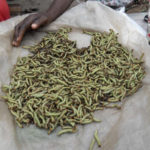Mud crabs are common in mangrove areas in Thailand. They are primarily caught in crab pots for commercial purposes. However, my Urak Lawoi friends and I specialized in digging up and catching these crabs by hand.
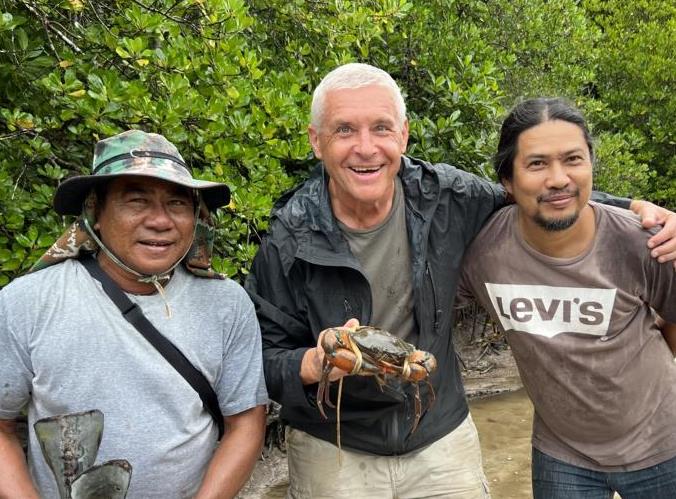
Who are Urak Lawoi people?
Ulak Lawoi is one of the three sea-gypsy tribes in Thailand bordering the Andaman Sea. The Northernmost tribes around the Ranong area and into Myanmar are called Moken. From that area down to the north of Phuket, the Moklen people reside, and from Phuket down to Langkawi Island in Malaysia, the Urak Lawoi people live. Urak Lawois changed their nomadic lifestyle and were settled by the Thai government into separate villages. They still speak a unique language based on a mixture of Burmese and Malay dialects, and they also speak Thai.
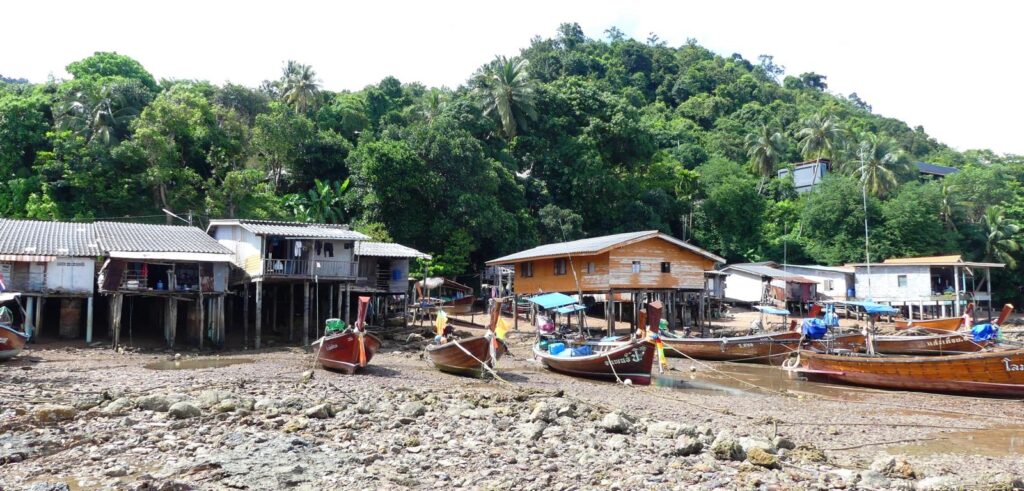
At Koh Lanta, our Thai friend connected us to the head of the local Urak Lawoi community. He, in turn, organized certain community members who specialized in various fishing, foraging, and catching techniques for us. Over time, we will present these practices in articles on this website.
Description and distribution of Black mud crabs
Mud crabs (Scylla olivacea) are primarily found on the coastline of the Andaman Sea in Thailand. They are locally called ‘Black crabs’ (Thai: ปูดำ) and have many other common names.
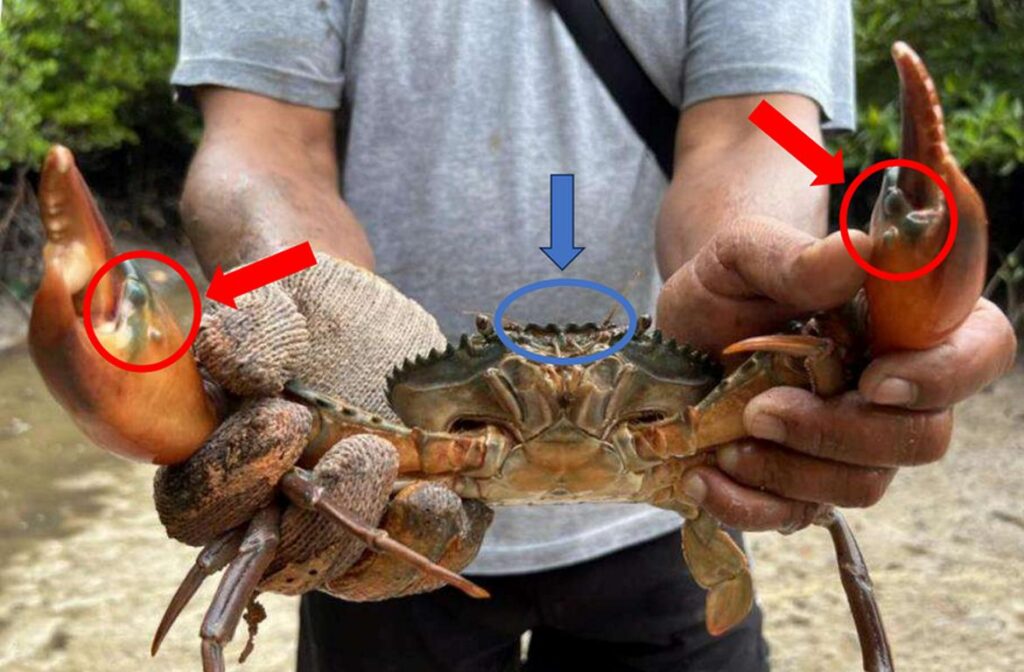
They can be distinguished from the other three mud crab species (S. serrata, S. transquebarica, S. paramamosain) by the following features:
- Rounded spines are at the corner next to the moveable pincer on the claw palm’s inside. See the two red circles in the picture above.
- In between the eyes are rounded frontal lobe spines with shallow separations. See the blue circle in the picture above.
- The color of the pincers and the lower body parts varies from orange to reddish brown.
The black mud crab is widespread throughout the Asia-Pacific region, as seen in the following picture.
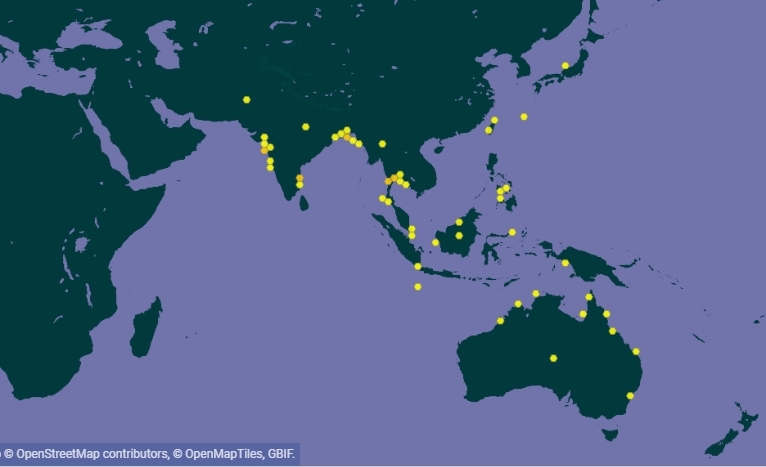
Where can you find Black mud crabs?
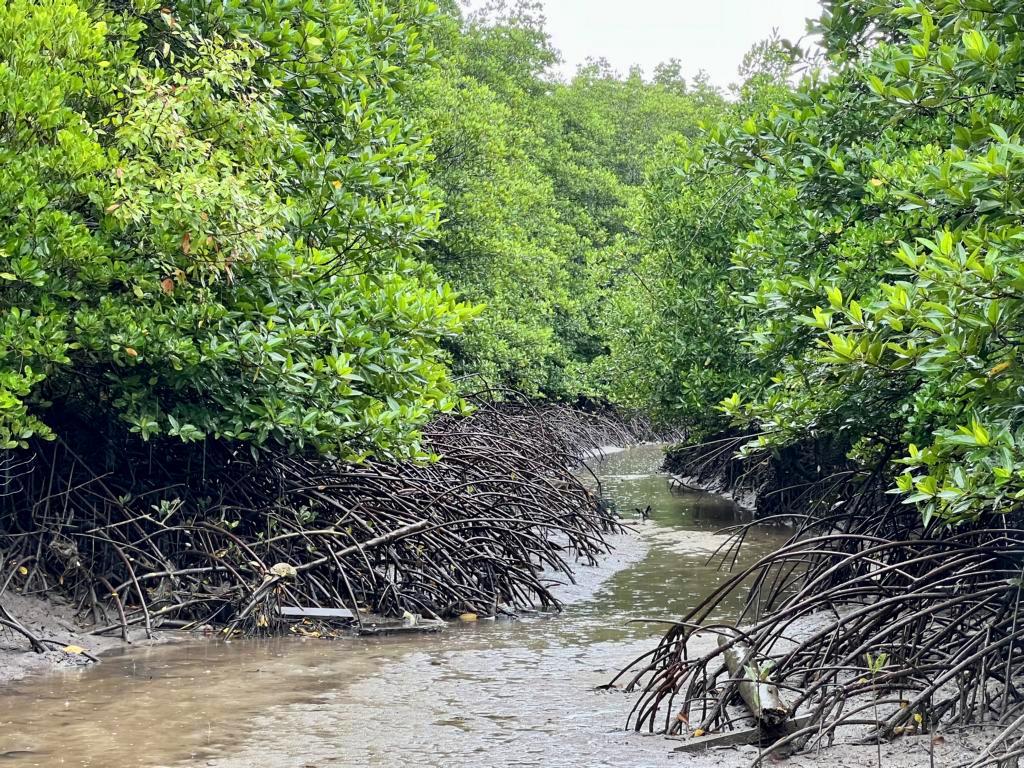
Mud crabs prefer sheltered waters such as estuaries and mangrove areas. They are highly tolerant of variations in water salinity and temperature. Although many occupy burrows in the intertidal zone, most adults live in areas that are below the low tide mark but still shallow, where they bury themselves in the mud during the day.
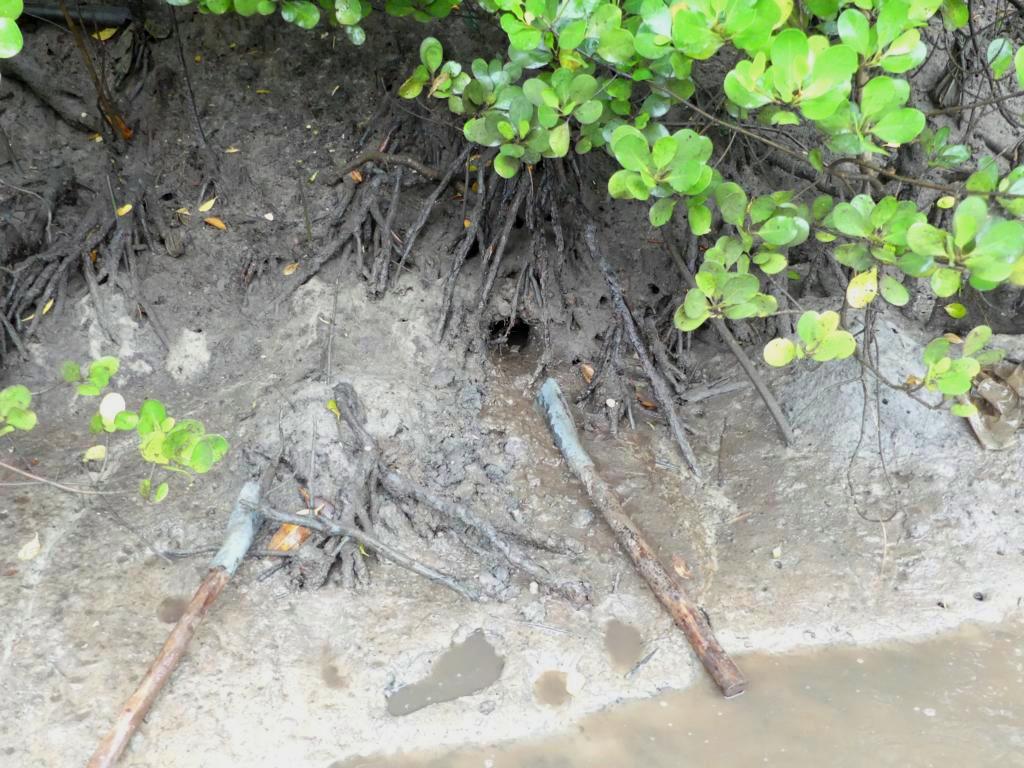
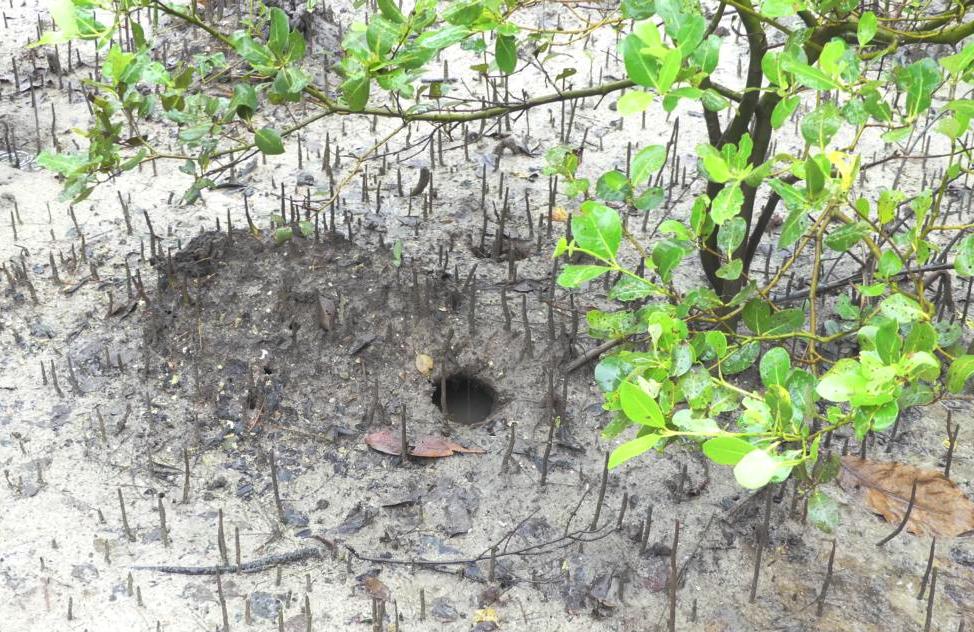
Burrows are usually associated with mangroves and tidal creeks. They are not often found beyond the mangrove’s landward limit. Most burrows extend into the ground at an angle of about 30 degrees and a depth of up to 0.8 m below the surface. They extend below the low-tide water table and always contain some saline water.
How to catch mud crabs in Thailand?
Mud crabs are usually caught by trapping them in baited crab pots, hooking them out of their burrows, or finding them in the open or under the mud.
Crab pots

These devices are called ‘pots’ but are netted cage traps with one entrance funnel. They are baited with trash fish, fish offals, or similar goodies. That is the standard method for catching mud crabs for the market.
Mud crab hooking

To catch mud crabs, a branch is cut so that a hook is created on one end, whose hook length is about 10cm / 4’’ long. This hooked branch is then pushed into a crab hole and rotated slightly.

It can be felt whether there is a mud crab at the other end. Then, an attempt is made to grab and pull it out of the hole.

In our case, Mr. Diao could feel a crab inside but could not hook it. Therefore, he dug the hole open and caught the crab by hand.
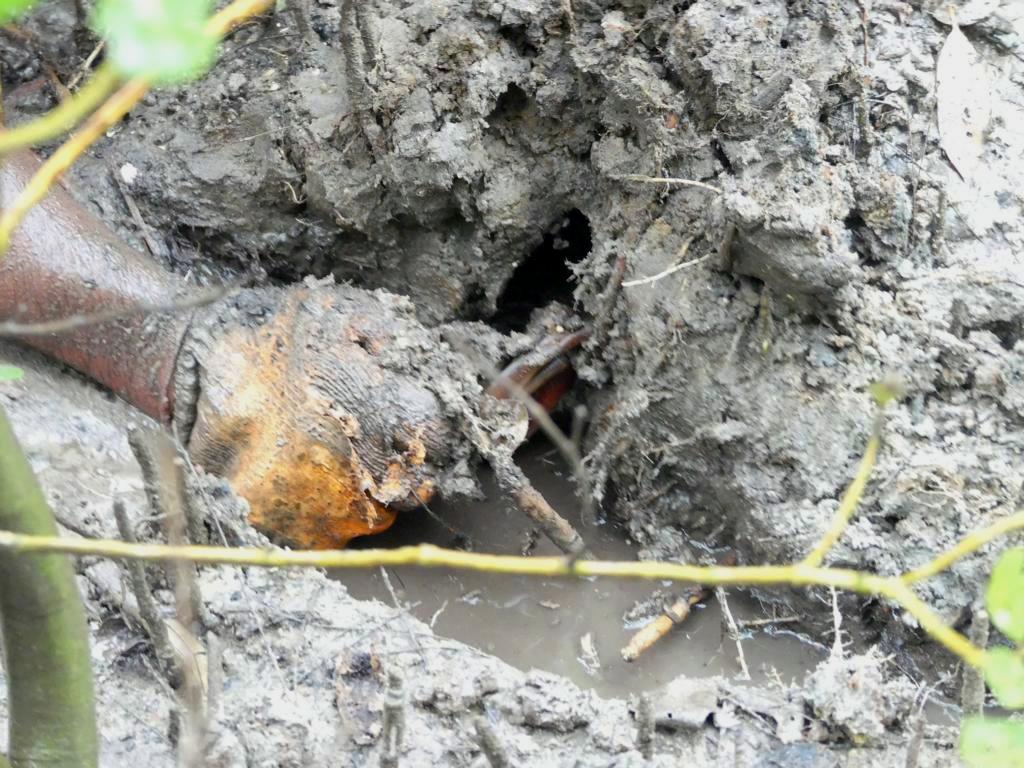
He did not know the size of the crab and mud crabs were dangerous due to their big claws, so he used a glove to protect his hand and fingers. When he got hold of it, we could see that it was a small specimen. Nevertheless, even such-sized crabs can pinch hard.
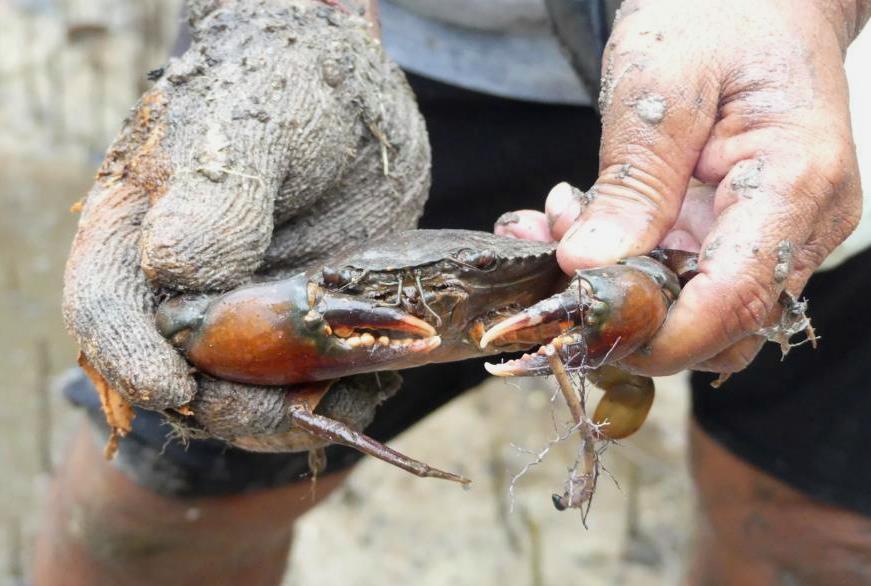
Collecting mud crabs, either in the open or under the mud

Usually, mud crabs are hidden in the mud during the daytime. However, this crab moved around in the evening, probably to feed on other crabs which abounded there. According to Mr. Diao, the best time to find them in the open is early evening and dawn.
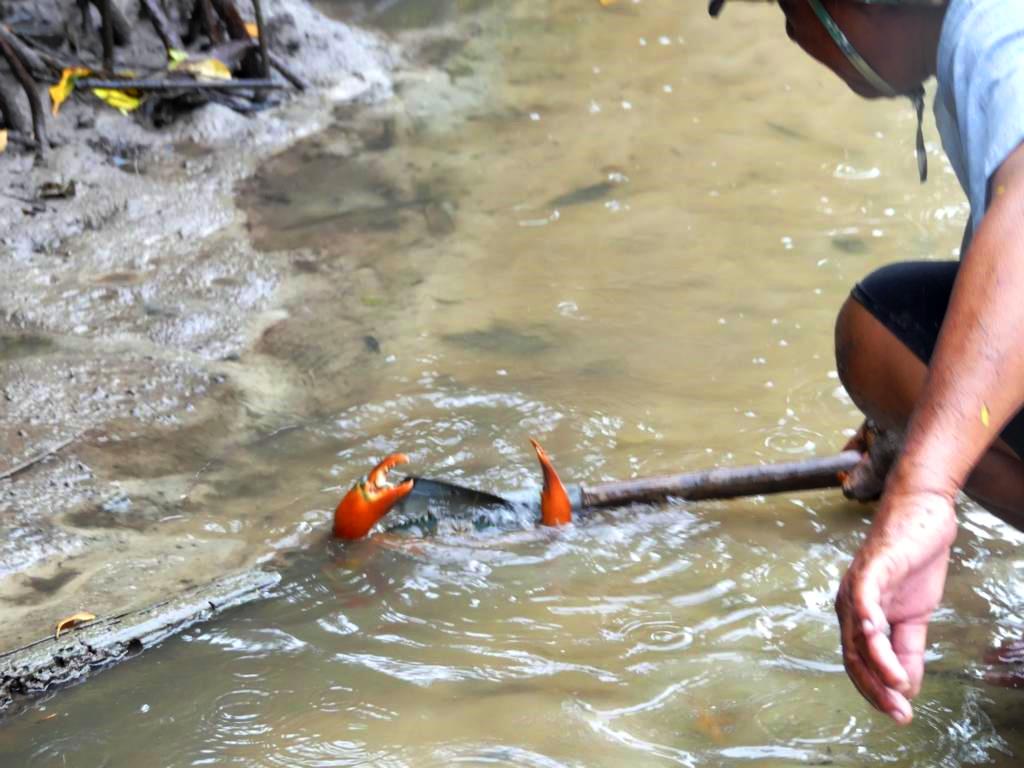
When he saw a giant mud crab in the water, Diao jumped onto it and caught it immediately—this happened in seconds.
Afterward, he gave me the crab for photos and taught me how to immobilize such a big crab.


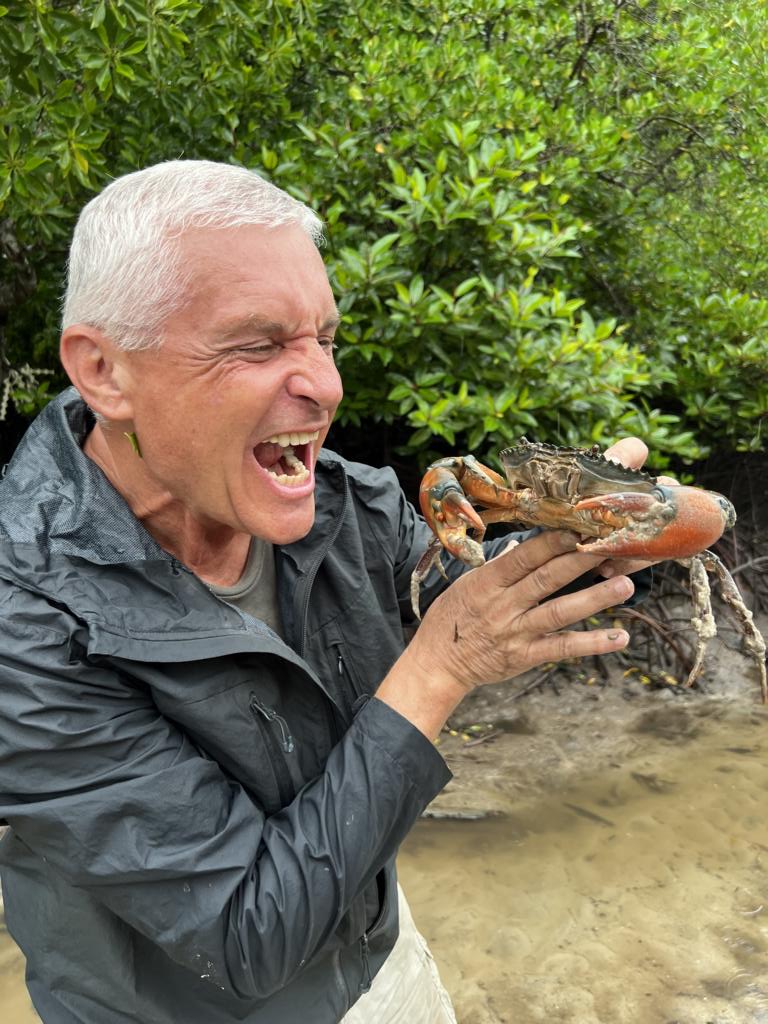
How do we immobilize a mud crab?
Mud crabs’ claws must be tied to their bodies so that they can not harm anyone. Black mud crabs are quite aggressive and pinch every living object. They even throw off one of their claws to gain freedom. Therefore, they are not the best friends of crab farmers, who prefer more docile mud crab species like Scylla serrata.
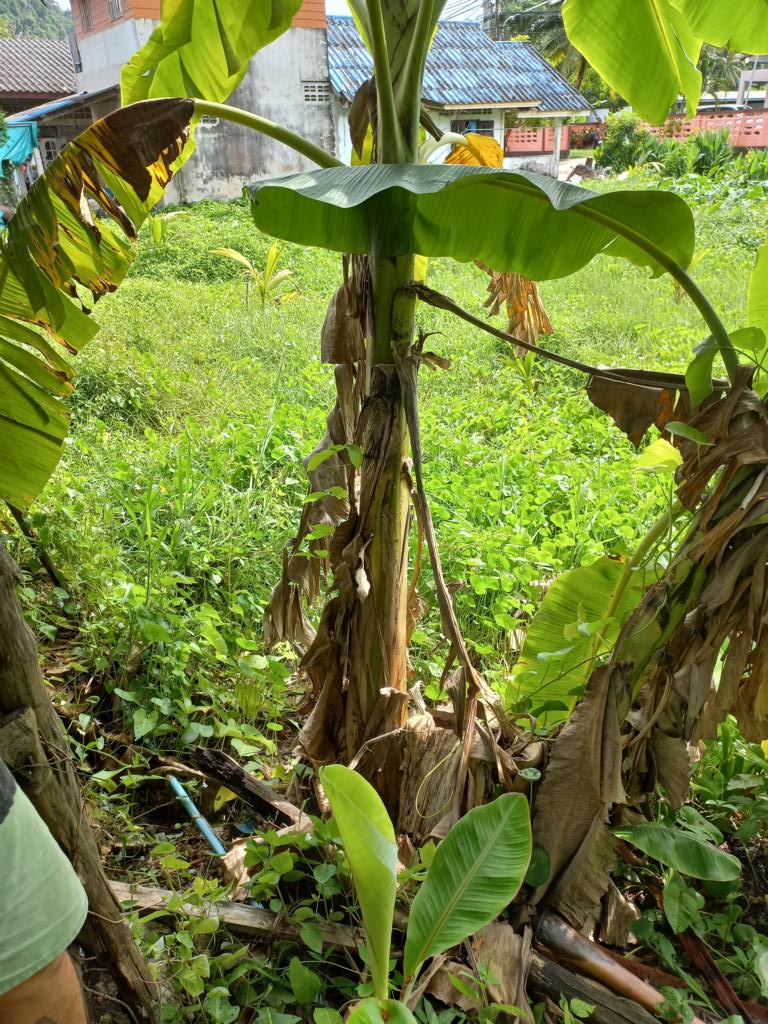
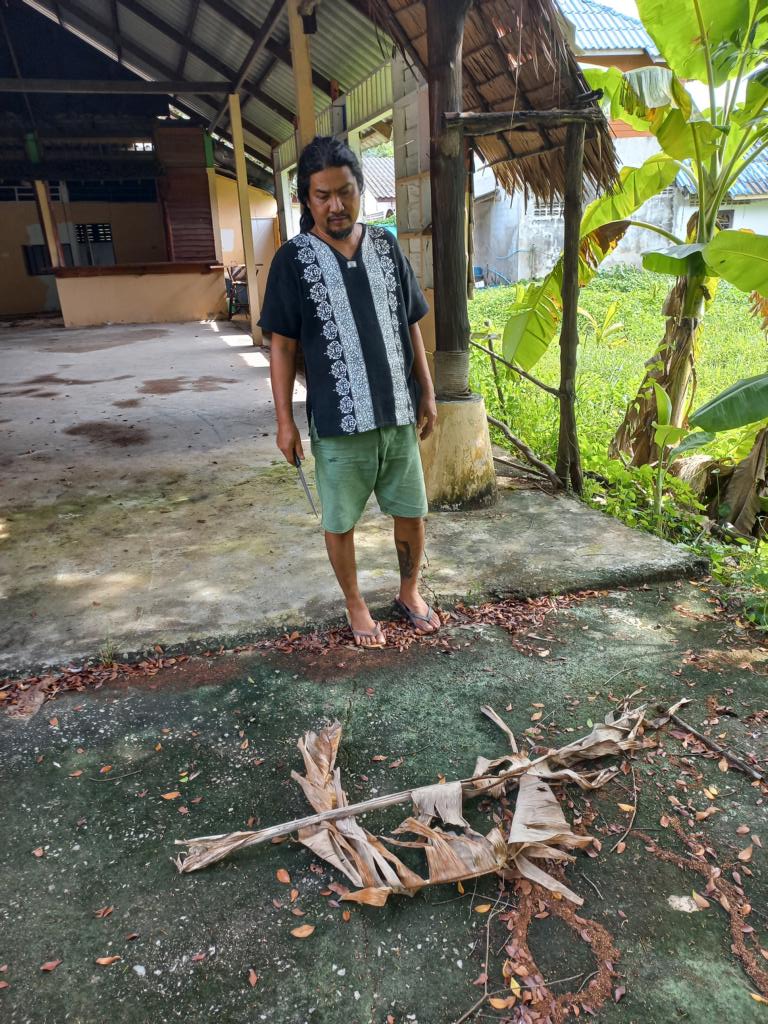

Before tying them, a suitable string must be found. Traditionally, the material of choice is wilted midribs of banana leaves. They are relatively thin and very tough.
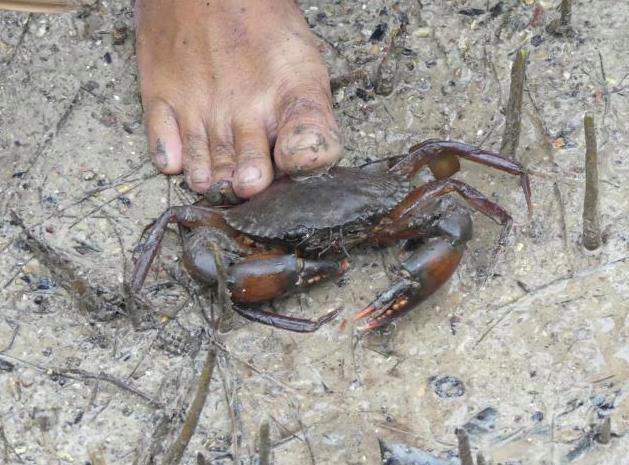

Tying the crab starts with pressing the carapace down the mud with one foot. A loop of the banana midrib is wrapped around and below the rostrum. After that, both ends of the banana midrib are turned around the pincer legs and moved forward over both pincers again. From this position, the binding material is moved again below the sides of the carapace to the backside of the crab.
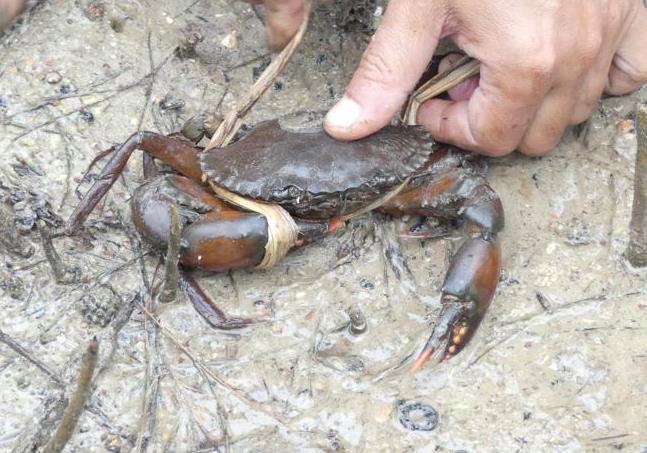
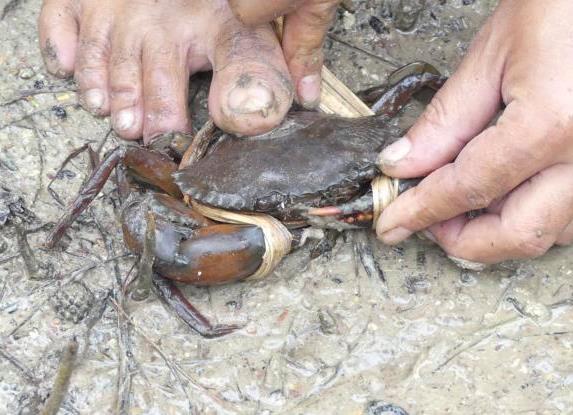
At the rear end of the mud crab, both banana midribs will be tightly turned around and knotted down. Another—and safer—technique is to move the string underneath both swimming legs and knot it on one side. This way, the string can not accidentally slip up the carapace.

Attention: If the string is not fully inserted under the sides of the carapace, the crab may break free, leading to a dangerous situation.
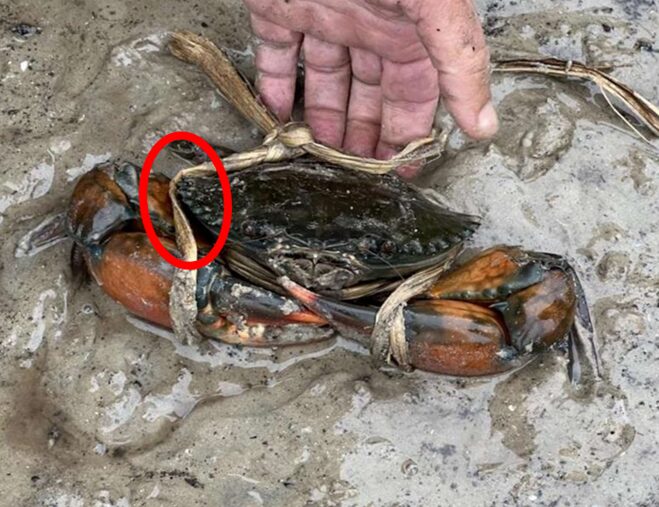
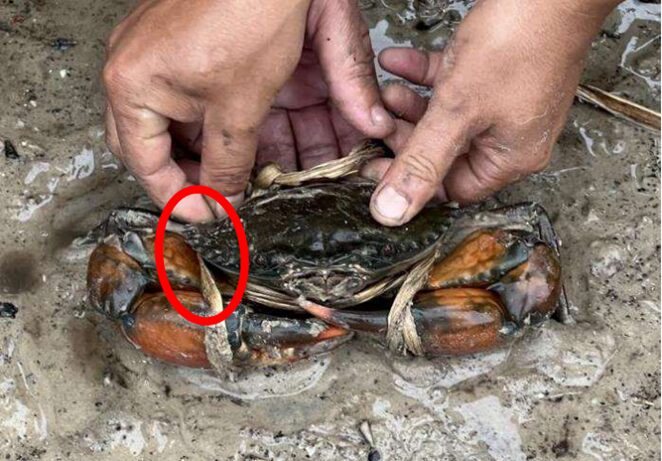
The crab is ready for the kitchen if adequately cleaned and the stringing is done correctly.

Mud crabs in the Thai kitchen
Scylla olivacea has the densest meat and most flavor of all three mud crab species. It is mainly caught in the wild and very seldom reared on farms.
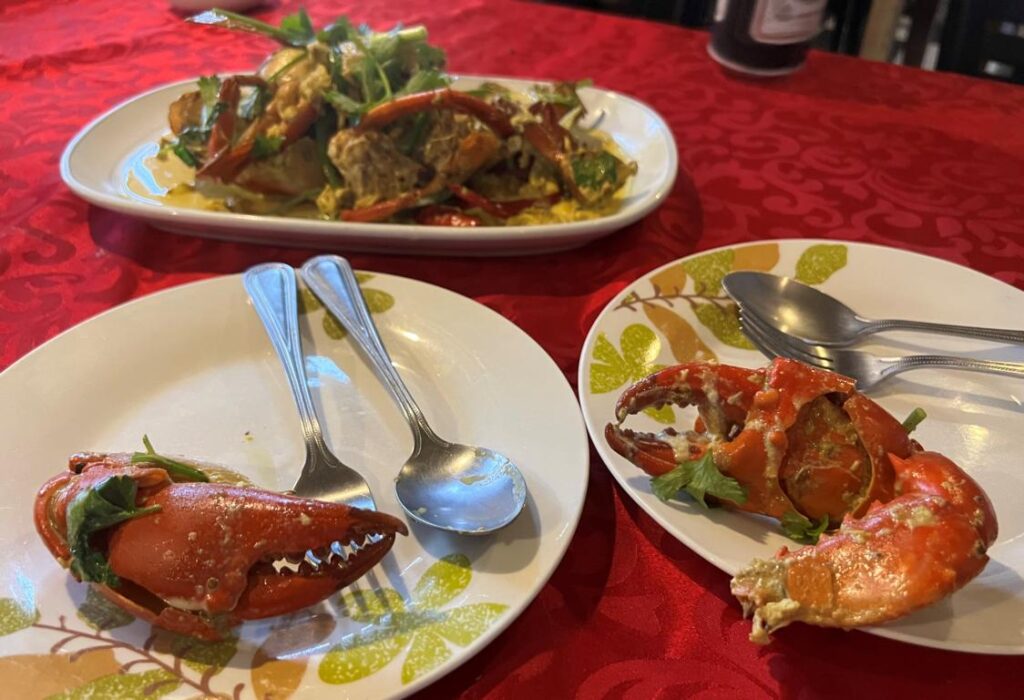
In Thailand, mud crabs are nearly always boiled and curried with coconut milk, shallots, chilies, and mangoes. Typical recipes can be found here or here.
We immensely enjoyed our self-collected mud crabs in that style.
Lessons learned from catching mud crabs:
- The mud crab species on the Andaman Sea coast differs from that on the Gulf of Thailand.
- Mud crabs can be caught in crab pots, hooked, or collected in lairs near tidal streams.
- During early evening and dawn feeding time, mud crabs can be surprised in shallow waters.
- For catching these crabs by hand, it is very advisable to use gloves for hand protection.
- All caught mud crabs must be restricted in their movements by tying them with a string.
- Scylla olivacea are the best-tasting mud crabs available worldwide.
Further readings about Crustaceans on this website:
Spearing of African blue swimming crabs
Catching Ghost crabs by digging
Three-spot swimming crabs on surf-beaten sandy beaches
Utilizing Horseshoe Crabs as a Food Source (Although Horseshoe ‘crabs’ are not Crustaceans but Merostomata)
.


